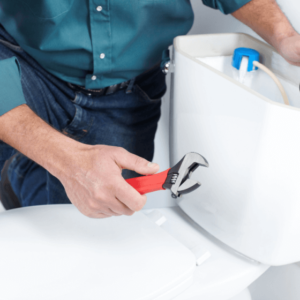When it’s cold outside and you’re missing the sunshine and greenery of warmer weather, liven up your home’s interior with indoor plants. Houseplants brighten up rooms, complement your décor and make the air inside your house fresher and healthier.
Indoor environments are cooler, drier and have a lot less sunlight than the outdoors, so regular care of your houseplants is a must. Below are some plant care tips to bolster your green thumb and help your indoor plants thrive.
Control Indoor Temperatures
Be mindful of temperature fluctuations indoors. When purchasing indoor plants, be sure to read the label to determine the temperature requirements for each one. Indoor plants generally prefer a controlled, constant temperature of 65 to 75 degrees Fahrenheit during the day, and 60 to 65 degrees Fahrenheit at night. When your home remains at a constant temperature, most plants will usually adapt to the environment. However, some plants require a cool period during the day to flower and bloom properly.
Make Sure the Plant Gets Enough Light
Give your indoor plants the right amount of light. Proper care for indoor plants includes learning what type of light your particular plant needs. Even though most indoor plants prefer shade or indirect sunlight, there are some varieties that require quite a bit of sunlight. In addition, most plants need a period of darkness to support their healthy growth. So when purchasing a plant, be sure you know what amount of light the plant needs.
Helpful Tip
Even though it may seem like a good idea, don’t place your plants on a windowsill during the winter. The extreme temperature swings—the sun’s heat during the day and the cold at night—can be hazardous to your plants’ health. For houseplants that need more sunlight, place them in the spot most warmed by the sun or buy artificial grow lights. Be sure to rotate the containers every few days so all the sides of your plants receive sunlight.

Water the Indoor Plant Correctly
Learn how much water your specific plants need. It might seem easier to water different plants with the same amount, but over-watering and under-watering are common ways of killing plants.. Too much water makes the soil too wet and can cause root rot and disease. If you under-water your plants, they will not get the nutrients they need from the water or the soil. So be sure to understand the watering needs of each individual houseplant to ensure it receives the proper hydration.
To water your plants, simply add water until it drains out of the bottom of the pot (this helps remove any excess minerals, salt or fertilizer). Don’t water the plant again until the soil is nearly dried out (just check to see how dry it is with a finger every couple of days). Try to water your plants in the morning.
Helpful Tip
Distilled water is much better for your plants than tap water, which contains chemicals like salt and chlorine. If you must use tap water, put it in a container and let it stand for about two days before adding it to your plants. You can also use rainwater. To gather rainwater, set a pan outdoors during the next downpour.
Don’t put plants in pots without holes in the bottom.
Your home is usually much drier in the winter than it is during the rest of the year. If the winter season is too dry for some of your plants, treat them to a sponge bath every week or two. Simply wipe their leaves with a damp sponge or cloth to moisten them and remove any dust.
Helpful Tip
Be sure each plant requires moistening before taking this step. Some plants may not need this treatment and others can be adversely affected by it.
Use the Right Soil for the Indoor Plant
Choose the best soil for your plants. Most houseplants prefer a balanced, nutrient-rich soil with a slightly acidic pH level, like a sterile potting soil. Potting soil also retains moisture and provides good drainage.
Helpful Tip
If you’ve had your houseplants for a while, re-pot them with fresh potting soil every few years. Old soil loses minerals over the years, so all plants, even those that don’t grow very much, will benefit from a fresh batch of soil.
If the top layer of soil becomes encrusted over time, loosen and remove it with a fork and replace with fresh, sterile potting soil.
Fertilize the Indoor Plant Correctly
Add the right fertilizer in the right amounts. Many people incorrectly believe that if a little fertilizer is good then a lot is better.. If you use too much fertilizer on your houseplants, you may do them more harm than good. Plants grow slower in an indoor environment than they do outdoors. So indoor plants need fewer nutrients; too many nutrients can build up to toxic levels. A good choice is a slow-release indoor fertilizer, specially formulated for houseplants.
Helpful Tip
If you’d prefer to use a liquid fertilizer, make sure you apply it less frequently; twice a month at most.
Signs of Trouble
No matter how much care you give your indoor houseplants, you may still experience some problems. Here are some things to look out for and what you can do to solve them:
Your plant’s green leaves are turning yellow. This common problem can be caused by too much or too little light; too much fertilizer or water. Remedy: Try changing your plant’s growing environment, one factor at a time. Watch carefully until you are able to determine the culprit.
The tips of the leaves are turning brown. Too much or too little water usually causes brown tips. An overdose of fertilizer can also cause tips to turn brown. Remedy: Make sure to water the plant only when its soil is nearly dry and refrain from adding fertilizer for up to a month. You can also re-pot it in fresh potting soil.
The leaves have yellow or brown spots. Spots are usually caused by too much sun or water. Remedy: Move the plant to a shadier location and allow the soil to dry out before re-watering.
The base of the stem is soft. Mushy stems are a classic symptom of over-watering. Remedy: Allow the soil to dry out. If the soil is already drenched, re-pot the plant in fresh potting soil.
The leaves are dry and brittle. At the opposite end of the spectrum, brittle leaves are a classic symptom of under-watering. Remedy: Water more frequently.
Good work! Your green thumb should now be working all through the winter.
Project Shopping List
Here’s what you’ll need to complete this project successfully.
- Distilled water (optional)
- Watering can
- Sponge or cloth
- Potting soil
- Planters and hanging baskets
- Plant food and fertilizer












